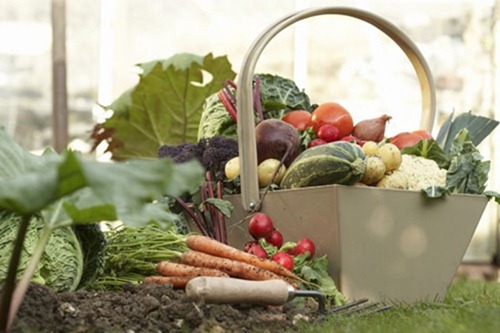Improving Plant Health With Companion Plants And Polycultures
12 years ago companion planting, guest post, Polyculture
Ecological garden designers often look to the native plant communities in their region to see which plants grow together naturally, in order to help determine suitable plant combinations for their designs.
This is because many plants that grow together actually benefit each other. It’s an excellent strategy, and yet plants need not have evolved together in order to get these benefits…
What Is Companion Planting?
Companion planting involves pairing plants that work well together. Unlike the plant communities outlined above, however, these plants may come from different regions. Popular examples in the vegetable garden are green beans and strawberries, carrots and tomatoes, and lettuce and spinach.
Sometimes the plants simply work well together because they take up different areas above or below the soil. Sometimes one plant deters a predator of the other plant. In the above examples, the plants tend to just grow better when planted near each other.
Often, the benefits realized are not nearly as grand as some gardening books indicate, but usually, no harm is done.
And yet companion planting is only the first step…
What Is A Polyculture?
A polyculture goes even further. While a monoculture is large swaths of just one plant, and companion planting often refers to planting 2 species together, a polyculture involves planting many species together to take advantage of various niches in the garden, much the way nature fosters this diversity:
-Some will grow tall and provide shade, while others hug the ground.
-Some are ready for harvest early, while others take longer, even within the same food group, such as lettuces or tomatoes.
-Some attract beneficial insects, while others repel plant predators.
-Some provide nitrogen for the soil, while others happily gobble it up.
Permaculture has embraced the polyculture philosophy by using integrated, multi-level plantings of dozens of species to take advantage of all the various opportunities in the garden. And sometimes it’s useful to create a “guild”, where a central “important” plant such as a fruit tree is surrounded by a group of plants that benefit the tree.
Summary
So not only can plants get along with each other, but they can provide for each other. While cover cropping during the low season is a great way to protect and improve the soil, ornamental and food gardens can also be interplanted throughout the entire year with plants that provide more benefits than just being beautiful or just producing food.
I don’t do straight, monoculture rows in my garden anymore. Each bed may have 20 plants all mingling together, perhaps 15 food plants and 5 beneficials such as yarrow, echinacea, chamomile, bee balm, clover or any number of others.
I may not get as big of a harvest from each food plant, but my overall yields are definitely bigger and it’s been obvious that the health of my plants has improved after a few seasons of finding out what works.
If you’re used to straight rows, you may want to take one bed this year and experiment with more interplanting. It’s often best to just experiment with many plants and then see what works in your soil and climate.
Phil Nauta is a SOUL Certified Organic Land Care Professional and author of the book ‘Building Soils Naturally’, to be released by Acres U.S.A. this spring. He taught for Gaia College and operated successful organic landscaping and organic fertilizer businesses prior to launching SmilingGardener.com to teach innovative organic gardening and vegetable gardening methods.



